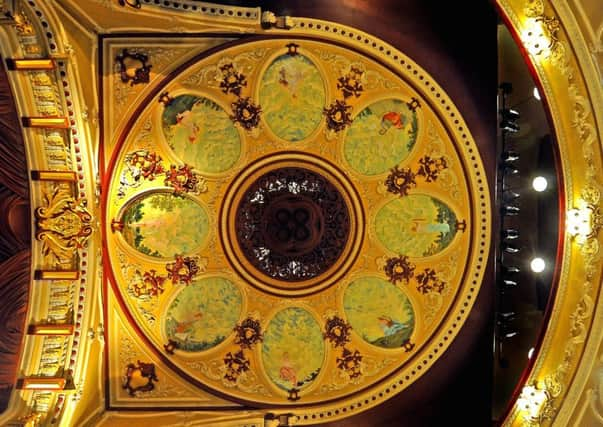Why it’s worth looking up to the ceiling during an outing to the theatre


They surround a central rose and are themselves encompassed by Rococo plasterwork.
The quality of the decoration in the theatre’s auditorium led to it becoming a Grade II*-Listed building in 1979, in celebration of its special architectural and historic interest. The theatre, which opened in 1894, is typical of 19th century tradition and like many of its time was the design and vision of famous Devon-born architect Frank Matcham.
Advertisement
Hide AdAdvertisement
Hide AdAs the Theatre Trust, which promotes the protection of theatrical venues, states on its website: “The period from the 1880s to the First World War was the greatest era of theatre building. New architects became renowned for their work and could design theatres according to the stringent building regulations. Probably the most prolific was Frank Matcham, who designed or renovated over 120 theatres. He was noted for his excellent planning and opulent interiors.”
It is not just the top of Matcham’s Wakefield theatre that is rather special. Under the stage, there is a medieval well. It appears that Matcham excavated to the limit of the water table to accommodate elaborate Victorian substage machinery.
He began work on the theatre’s design a year before it’s opening. It was built for a price of £13,000 and today is one of the smallest remaining examples of a Matcham theatre auditorium.
“It is a shining example of his work and demonstrates his incredible ability to deliver a beautiful theatrical environment within a very tight space,” the theatre sets out in a blurb on its history.
Advertisement
Hide AdAdvertisement
Hide Ad“The auditorium displays all the artistic elements of a Matcham composition of workmanship; he expected a high standard of work and used various skilled practitioners.”
Next theatre trip, before the curtain rises, it’s certainly well worth a look up above.
Technical details: Nikon D3s shot on a 28-70mm lens and an exposure of 1/25th @ f5.6, 2000 ISO.